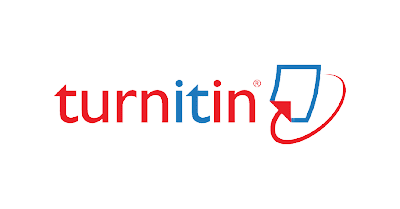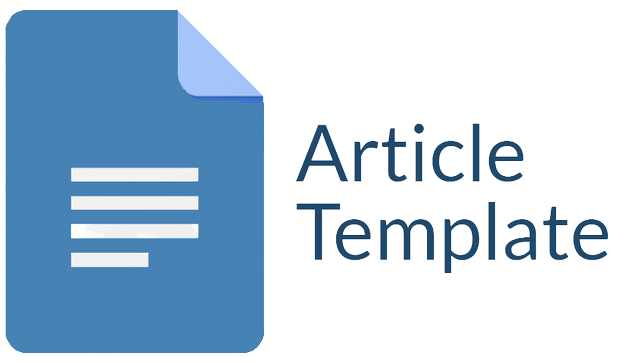A DESCRIPTIVE STUDY ON THE IMPROVEMENT OF STUDENTS’ READING COMPREHENSION THROUGH NUMBER HEAD TOGETHER TECHNIQUE
Abstract
This research aims to describe the improvement of students reading comprehension by using Number Head Together (NHT) technique from ten (10) articles selected. This research used qualitative method and descriptive analysis. The results of this research found that from the ten (10) articles analyzed, A10 was the most improved article in reading comprehension by using Number Head Together technique compare to other nine (9) articles. Futhermore, based on the t-test result of the use of NHT technique in reading comprehension, the result reveals that from nine (9) articles, 90% which used NHT in the teaching process proved that the achievement were more improved, while one (1) of the articles (10%) did not mention the t-test result but confirmed that there was improvement in the results of students’ reading comprehension .This indicates that Number Head Together (NHT) technique improved students’ reading comprehension. Number Head Together (NHT) technique not only results on students interest in learning process but also involved the students in the activity of collaborative learning as team or group. However, this grouping motivated the students to produce better achievement in their study activity.
Downloads
References
Bowen, G.A. (2009). Document analysis as a qualitative research method.Qualitative Research Journal,9(2),27-40.
Cooper, J. M, (1999). Classroom Teaching Skill. Boston: Houghton Miffin Company.
Daniati. (2010). Improving Students’ Reading Comprehension Through Numbered
Head Together Technique at Class XI IA of SMA Kartika Kendari. Unpublished Thesis.FKIP Unhalu Kendari.
Flick, U. (2002). An introduction to qualitative research (2nd ed.). London, UK: Sage Publications.
Frankel, Jck R dan Norman E. Wallen. (1993). How to design and evaluation research in educational (2nd ed). New York,NY:McGraw hill Inc.
Gunning, D. B. (2002). The Teaching of History. London:Cromm Helm.
Harmer, J. (1998). How to Teach English. An Introduction to the Practice of English Language Teaching. London,LN: Longman.
Irawan P. (2012). Improving Students Reading Comprehension Using Number Head Together Technique. (Skripsi, UNS). https://digilib.uns.ac.id/dokumen/detail/24017/Improving-students-reading-comprehension-using-numbered-heads-together-nht-technique-a-classroom-action-research-in-the-eleventh-grade-of-SMA-Negeri-Colomadu-Karanganyar-in-the-academic-year-20102011
Kagan, S. (1986). Cooperative Learning and Sociocultural factors. In California Departement of Educational (Ed),Beyond language : social and cultur factors in schooling language minority students.(231-298)
Kagan, S. (2007). Positive Outcomes of kagan structure.Calipornia. Kagan Publishing.
Mc Grath, I. (2002). Materials Evaluation and Design for Language Teaching. Edinburgh: Edinburgh University Press.
Novitasari, R., & Abdullah, S. (2013). The Implementation of “Numbered heads together” in teaching reading narrative text to the Tenth Graders. E-Jurnal Unesa. 01( 01), 1-9.
Perry’s. (2008). Chemical Engineer’s Handbook(8th ed).Mc Graw Hill Book Company:London
Safitri, D. (2018). Teaching Reading Comprehension By Using Number Head Together Technique. (Skripsi. Ar-Rainy). http://repository.ar-raniry.ac.id/id/eprint/7298
Slavin, R. E. (1990). Cooperative Learning.New Jersey: Prentice-Hall.
Copyright (c) 2022 Tri Rohani, Vera Yuniar, Yuliana Yuliana

This work is licensed under a Creative Commons Attribution-ShareAlike 4.0 International License.
Jurnal allows anyone to compose, correct, and do derivative works, even for commercial purposes, as long as they credit for the original work. This license is the freest. It is recommended for maximum distribution and use of licensed material.
The submitted paper is assumed not to contain any proprietary materials that are not protected by patent rights or patent applications; The responsibility for technical content and protection of proprietary materials rests with the authors and their organizations and not the responsibility of journal or its editorial staff. The primary (first/appropriate) author is responsible for ensuring that the article has been viewed and approved by all other authors. The author's responsibility is to obtain all necessary copyright waivers to use any copyrighted material in the manuscript before submission.
Jurnal Pendidikan, Sains dan Teknologi allows the author(s) to hold the copyright without restrictions and allow the author(s) to retain publishing rights without restrictions. Jurnal Pendidikan, Sains dan Teknologi CC-BY-SA or an equivalent license as the optimal license for the publication, distribution, use, and reuse of scholarly work. Jurnal Pendidikan, Sains dan Teknologi allows the author(s) to hold the copyright without restrictions and allow the author(s) to retain publishing rights without restrictions. Jurnal Pendidikan, Sains dan Teknologi CC-BY-SA or an equivalent license as the optimal license for the publication, distribution, use, and reuse of scholarly work.
In developing strategy and setting priorities Jurnal Pendidikan, Sains dan Teknologi recognize that free access is better than priced access, libre access is better than free access, and libre under CC-BY-SA or the equivalent is better than libre under more restrictive open licenses. We should achieve what we can when we can. We should not delay achieving free in order to achieve libre, and we should not stop with free when we can achieve libre.
Jurnal Pendidikan, Sains dan Teknologi is licensed under a Creative Commons Attribution-ShareAlike 4.0 International License.
You are free to:
- Share a copy and redistribute the material in any medium or format
- Adapt a remix, transform, and build upon the material for any purpose, even commercially.
- The licensor cannot revoke these freedoms as long as you follow the license terms.






